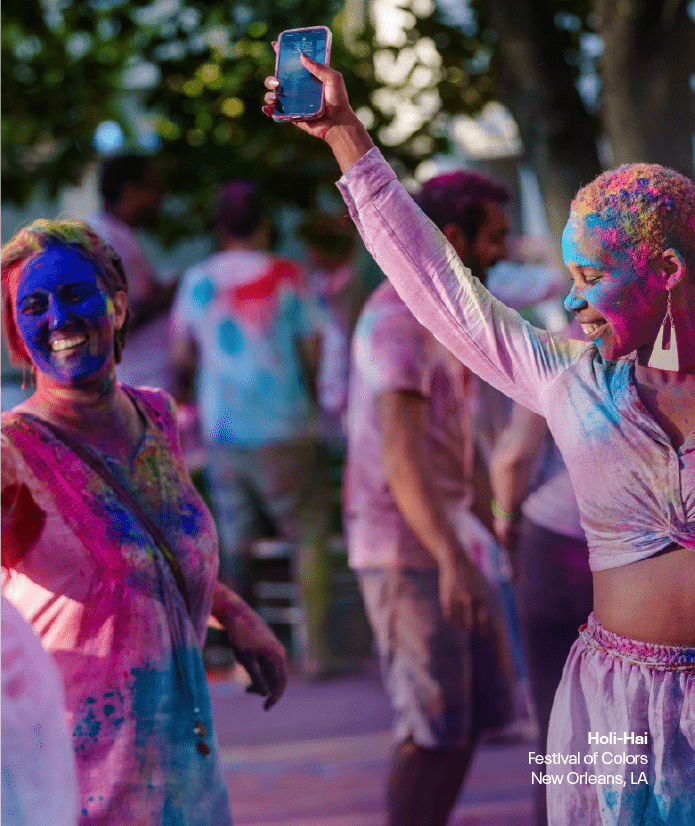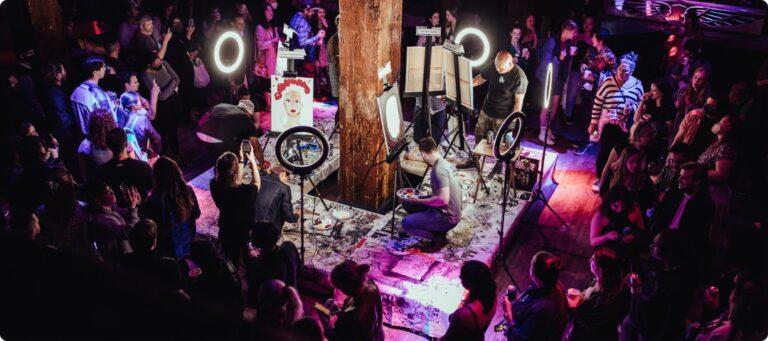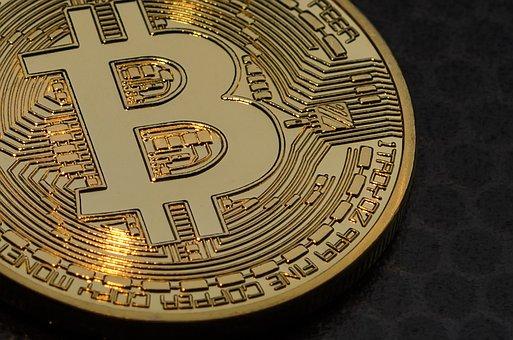Inflation, competition, and changing consumer behaviour — it’s a lot to consider when pricing your event.
We’ve partnered with behavioral economists and scientists to understand what drives consumer value and a willingness to purchase tickets so that you can make an informed decision on the right price for your event.
2022 is showing signs of recovery for ticket pricing and consumer demand
We know that despite economic concerns, attendees are prioritizing room in their budget for live experiences. Our platform data above confirms this. So let’s see how behavioural scientist and CEO and co-founder of Irrational Labs Kristen Berman and behavioural economist and founder and CEO of The Brainy Business Melina Palmer advise you to price your tickets in order to attract attendees and drive sales.
7 Ticket Pricing Takeaways From Experts
Pricing takeaway #1
Create a steady revenue stream by marketing and selling tickets year-round
So far in 2022, we’re seeing less price fluctuation from month to month than even 2019 — stability is here. So rather than worry about seasonal or external factors impacting pricing fluctuations, think about creating a steady revenue stream by selling tickets all year, and not just in the months, weeks or days before your event.
Creating urgency around your event will raise its perceived value and excite potential attendees. To incentivize interested attendees to buy their ticket early, offer an exclusive discount to early bird purchasers. You can set a certain time period for the discount (say, the first week of sales) or limit it to a certain number of uses (say, the first 50 tickets purchased).
Pro tip: The early bird pricing strategy is a no-cost, effective way to generate buzz for your event months in advance. Create demand in terms of quantity and availability by offering a limited number of spots — for a limited period of time — at a discounted rate.
Example CTAs could include:
- Early bird special! First 50 tickets are only £40.88 before the price increases to £53.11
- £40.88 tickets only if you purchase before August 1 — £53.11 afterward!
By rewarding attendees who buy before a deadline, you’ll motivate them to commit earlier. The words “sold out” are like gold for sales. Once people see that your early bird tickets are snatched up, they’ll rush to grab the remaining tickets before they’re gone. Ultimately, that means you’ll sell more tickets and increase your profit.

“People have a lot going on in their life. If you want them to come to your event that is four months away, you need to give them a reason to buy a ticket today, not procrastinate. One way to inspire action now is early bird discounts. This way, you give people a deadline to help them get a good deal”.
Kristen Berman, CEO and co-founder of Irrational Labs
Pricing takeaway #2
Consider your event’s true value, and sell fewer tickets
Selling fewer tickets might sound counterintuitive, but by charging more — in other words, by setting a price that realistically covers your expenses and overheads, and reflects the event’s true value — you could reduce the need to sell the same volume of tickets in order to not only break even but to turn a profit.
As Berman points out, it’s all about finding your event’s threshold. Increase your prices slightly and see where demand drops off.
But what if you’re concerned that a higher price tag could put people off? For Palmer, the amount you charge for a ticket sends an important message to the consumer.

“People tend to value things more when they are more expensive. Event organisers may feel they need to offer lots of discounts and specials, and make tickets as affordable as possible to attract people. That is often not the case. If your event is more expensive, there can be a higher value placed on it”.
Melina Palmer, CEO and founder of The Brainy Business
Palmer adds: “People may be more likely to believe they’ll get more out of it, which essentially creates a self-fulfilling prophecy. When someone pays a lower amount, they have less invested in it, and studies show they often get less out of the experience, too”.
Pricing takeaway #3
Prime people before revealing your price and build FOMO
After two years of cancelled or postponed events, people are excited to experience something extra-special, but being able to convert interest into action isn’t guaranteed. Particularly when we consider the rising cost of living.
That’s why Palmer says it’s so important to make sure people are ready to make a purchase before they even see the price.
“In general, pricing is almost never about the price”, Palmer says. “What happens before the price matters much more than the price itself”.
Palmer suggests organisers frame their marketing messages in a way that showcases the benefits to a potential attendee and triggers the emotions necessary for making buying decisions.
“Humans are also very loss averse, which is a big reason why FOMO exists”, Palmer says. “If you can frame something as what attendees might miss out on, they’re more likely to want to take action. Because we are a herding species, we really want to do things others are already doing. Therefore, leveraging social proof to show that your event is popular, and that other people want to attend can be a major motivator for getting people to act”.
Berman agrees, saying it’s all part of building a sense of anticipation before an event. Anticipation elongates the experience”, she says. “Imagine a concert is just three hours long. If you build up excitement before — maybe asking people to plan outfits, listen to songs, know trivia — then you’re extending the experience. It’s not just three hours. You get to enjoy thinking about and planning the event for more time”.
And if you want to charge a higher price for your event, Berman says to add more value and highlight the benefits of the experience more. For example, market that it’s a concert with the lead singer sharing personal stories about the album or a cooking lesson that lets you personally pick the spices from a garden.
“Price is about the perception of value, and organisers should find ways to show or tell that the value of the event is high for their audience”, says Berman.

Other strategies we recommend to inspire excitement before your event are:
- Sharing teasers via social media of your event details and performers or hosts
- Adding a countdown timer to your website for the day tickets go on sale or the day of your event
- Sharing positive customer reviews or testimonials from prior events
- Posting recap videos or images from prior events
Pro tip: Provide a premium experience by offering attendees access to a range of special perks and benefits when they purchase a top-tier ticket. From the chance to meet guest speakers to the opportunity to head backstage for free food, drinks, and merchandise, VIP tickets create a sense of must-have exclusivity.
Pricing takeaway #4
Use tiered ticket pricing to create comparisons
“The brain has a hard time valuing one-off items”, says Palmer, “which is why having the option to compare items can be really valuable”. Tapping into the concepts of relativity and anchoring, she suggests using tiered ticket pricing to give attendees a choice while at the same time guiding their ticket purchase decision-making.
“The first numbers people see have an impact on what comes next”. says Palmer, “so you don’t want to list the lowest prices first and work your way up. It is almost always better to start high and go low. You also don’t want to have the thing you want to sell be the most expensive option you offer. Create a bundle or do something to make it so that the ‘best option’ isn’t the highest price”.
Pro tip: Multiple ticket types can also increase perceived value: They make cheaper tickets look like a better deal, and more-expensive tickets look like a VIP option, all in a way that reinforces the benefits of value-based pricing. Remember, the ticket types you offer are completely up to your imagination – you can get creative with branding and names to make them even more ownable and unique to your experience!
Although there’s a variety, tiered pricing examples can go into four core groups:
- Regular tickets: Standard general admission
- Special access: Gives attendees something extra for a higher price. For example, VIP, early access, or a backstage pass
- Targeted discounts: Gives discounts to all groups that can “prove” membership. For example students, children, or members of the military
- Group discounts: Offers discounts for bulk purchases, for example, a pack of six tickets for one price
The reality is there are multiple pricing sweet spots, and by using tiered pricing, you can hit each potential attendee’s perfect price.
Pricing takeaway #5
Close the gap between online and real-life pricing
During the pandemic, many organisers shifted to hosting online events. And despite venues reopening and more and more people attending live events as 2022 unfolds, it’s clear that digital-only or hybrid events are here to stay.
So how should creators price their online events? “Remember that virtual events are different [from] real-life events, and they should be treated as such”, says Palmer. “Don’t try to [reconstruct] a version of what would have happened in person. Instead ask: ‘What amazing things can we do virtually that wouldn’t be possible in person?’ and ‘What do people want most out of our event?’ and then look for a virtual option that can fulfill that need, and charge accordingly”.
Pricing takeaway #6
Convert (free) online attendees into (paying) real-life attendees
As mentioned earlier – despite the pandemic and increasing inflation rates – consumers are still willing to spend money to attend events. But how can you capture the attention of the number of attendees who purchase free tickets to in-person events? And how can free online event attendees be encouraged to pay for a ticket and/or attend an in-person event? For Berman, the solution lies in how you craft your marketing messages.
“The coolest thing about virtual is that it can be a foot in the door, which is a small step to a large action”, says Berman, who cites an experiment in which people were asked to put a small sign in their window to promote a candidate. Then, a few days later, they were asked to put a large sign in their front yard to promote a candidate. The people who were first asked to put up the small sign were more likely to put up the big sign, compared to the people who were only asked to put up the big sign.
“With virtual, you can ask your audience to do a small thing, like attend a 30-minute event where they don’t even need to leave their house. Instantly they are involved, and your next job is simply to figure out how you build on that relationship”, says Berman.
Ultimately, the decision around whether to start with a free online event to get audiences familiar with you and establish trust is going to come down to your budget and business strategy. Our caution to you is to remember there is a value to your content. And if you aren’t charging for it, you immediately reduce the perceived value and could struggle to monetise your events in the future.
Other ways you could look to monetise should you decide to host free virtual events:
Monetise with sponsorship
Focus on your sponsorship sales and drive revenue through a larger overall attendee base. Digital sponsorships are trackable and more flexible than their in-person counterparts. And the more attendees you capture, the more your sponsorships are worth.
Monetise with data
The second way to monetise your free virtual event is through your event data. You don’t need to convert a paid attendee right away — sometimes a free option works like a try-before-you-buy. Think of the freemium model we see in the SaaS vertical. Once you’ve captured them as a virtual attendee, it becomes much easier to convert them down the road. The concept involves lowering the barrier to entry, proving the value at a free virtual event and then converting as a paid attendee for a future event.
And this takes us into our final takeaway — more reason to be cautious when not charging your attendees for event entry.
Pricing takeaway #7
Avoid undermining your pricing with free events — if you can get attendees to pay, you’ll see more people show up
Attracting attendees doesn’t mean you have to offer your events for free.
As discussed, when pricing your online event, it can be tempting to offer free tickets in order to give audiences a taste of what you do. However, it’s always worth benchmarking your events to others within your category, as well as across other categories that offer similar events in terms of the entertainment or educational value that an attendee can expect to experience.
As Berman says: “You might feel you have to compete with events that command a lower price. But by offering a cheaper or free price, you run the risk of creating a lower anchor in the market than there was before. The same goes for pricing your online and in-person events. We’ve already talked about how people like to make comparisons, and if people see your online event for £4.09 and your in-person event for £20.43, it’s likely they will opt for the former. In other words, your free events run the risk of cannibalising your paid events”.
The real win is if you can get people to pay something (anything), you will have a higher percentage of people show up. “You may have less people register since it’s a paid event — free will usually win with number of attendees!” says Berman. “But when people pay something, they feel more obligation to go because you’re losing/wasting money if you decide to bail at the last minute. There is no cost to bailing for free events”.
Anecdotally, we can tell you that we hear more concern and experiences with “no-shows” from creators who host free events or those with tickets under £8.17. Many of them execute an “oversell” strategy in order to ensure attendance meets expectations. This is another reason why free events may or may not be a tactic your business wants to employ.
Use the above advice as a guide and reference point to price your tickets, build your audience base, and grow your business.
Here’s to a great rest of the year for your business and attendees. We will bring you more data-backed trends and insights as the landscape evolves.





